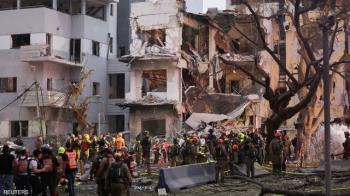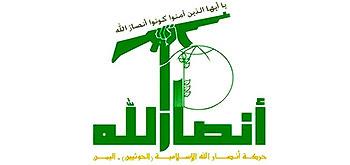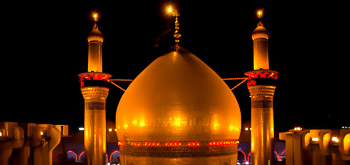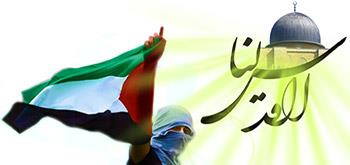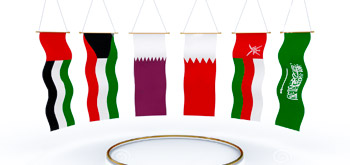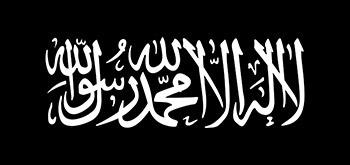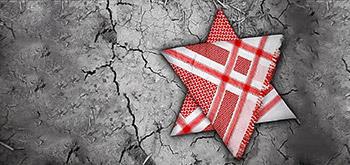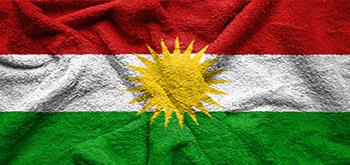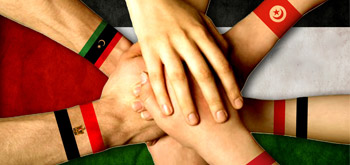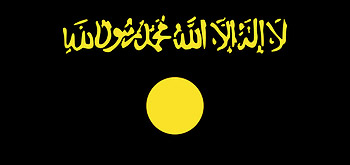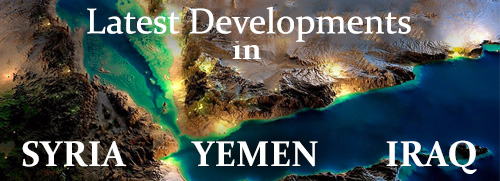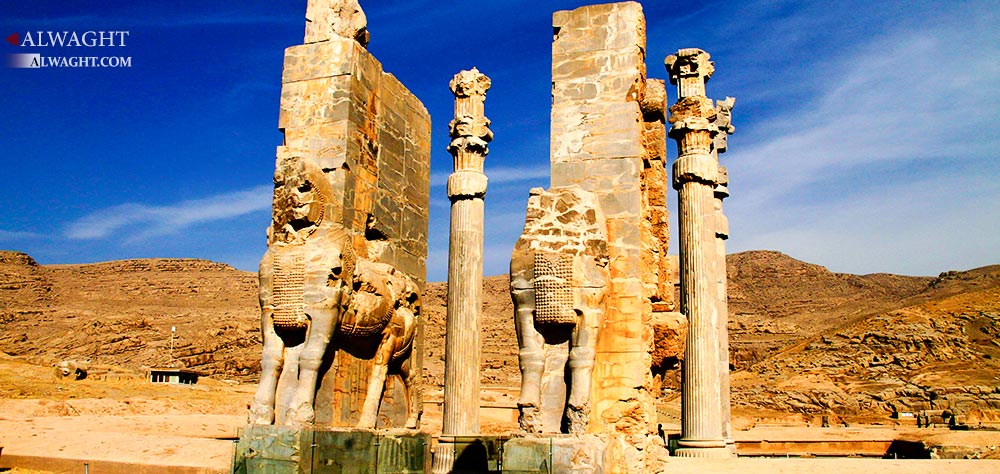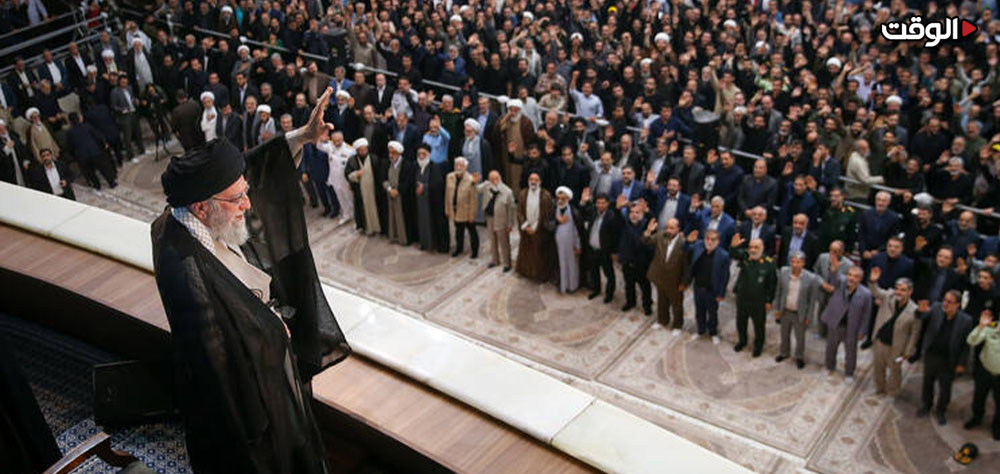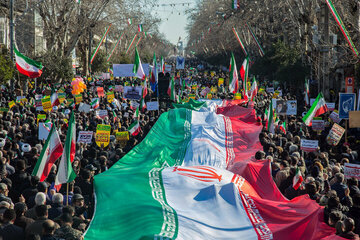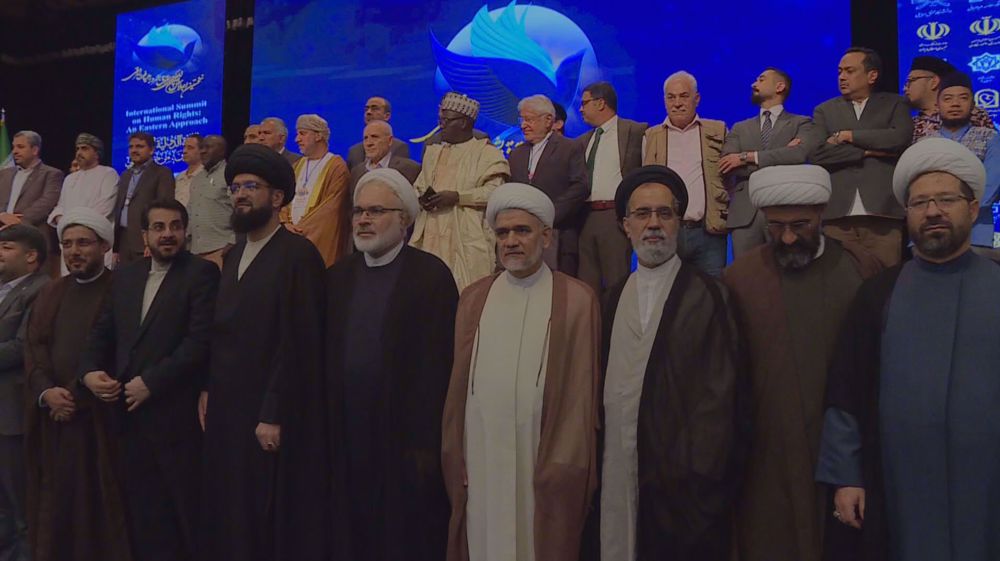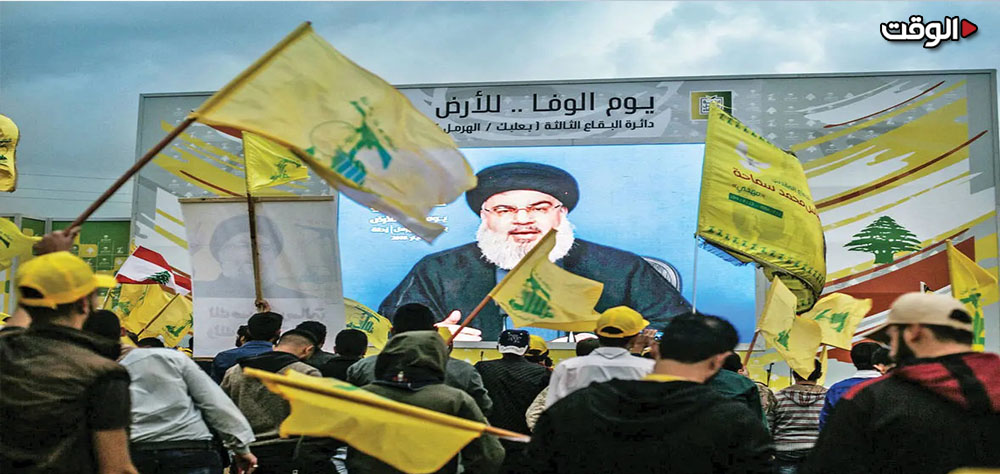Introduction
Conceived to be the seat of government for the Achaemenian kings and a center for receptions and ceremonial festivities, the wealth of the Persian Empire was evident in all aspects of its construction. The splendor of Persepolis, however, was short-lived; the palaces were looted and burned by Alexander the Great in 331-330 B.C. The ruins were not excavated until the Oriental Institute of the University of Chicago sponsored an archaeological expedition to Persepolis and its environs under the supervision of Professor Ernst Herzfeld from 1931 to 1934, and Erich F. Schmidt from 1934 to 1939.
The magnificent ruins of Persepolis lie at the foot of Kouh-e Rahmat, or "Mountain of Mercy," in the plain of Marv Dasht about 850 kilometers south of the present capital city of Tehran and about 50 kilometers north of Shiraz.
The exact date of the founding of Persepolis is not known. It is assumed that Darius I began work on the platform and its structures between 518 and 516 B.C., visualizing Persepolis as a show place and the seat of his vast Achaemenian Empire. He proudly proclaimed his achievement; there is an excavated foundation inscription that reads, "And Ahuramazda was of such a mind, together with all the other gods, that this fortress (should) be built. And (so) I built it. And I built it secure and beautiful and adequate, just as I was intending to." But the security and splendor of Persepolis lasted only two centuries. Its majestic audience halls and residential palaces perished in flames when Alexander the Great conquered and looted Persepolis in 330 B.C. and, according to Plutarch, carried away its treasures on 20,000 mules and 5,000 camels.
From the time of its barbaric destruction until A.D. 1620, when its site was first identified, Persepolis lay buried under its own ruins. During the following centuries many people traveled to and described Persepolis and the ruins of its Achaemenid palaces. Many of their observations were later condensed and published by George N. Curzon in Persia and the Persian Question (London and New York, 1892). But scholarly and scientifically planned work was not undertaken until 1931. Then Ernst Herzfeld, at that time Professor of Oriental Archaeology in Berlin, was commissioned by James H. Breasted, Director of the Oriental Institute of the University of Chicago, to undertake a thorough exploration, excavation and, if possible, restoration of the remains of Persepolis. Thus, Herzfeld, in 1931 became the first field director of the Oriental Institute's Persepolis Expeditions. In 1931-34, assisted by his architect, Fritz Krefter, he uncovered on the Persepolis Terrace the beautiful Eastern Stairway of the Apadana and the small stairs of the Council Hall. He also excavated the Harem of Xerxes. When Herzfeld left in 1934, Erich F. Schmidt took charge. He continued the large-scale excavations of the Persepolis complex and its environs until the end of 1939, when the onset of the war in Europe put an end to his archaeological work in Iran. During the last years of excavating, the University Museum in Philadelphia and the Museum of Fine Arts in Boston had joined the Oriental Institute in order to cope with the tremendous work at hand.
Schmidt's expedition staff, though varying from year to year, consisted mainly of his assistant Donald E. McCown, architect John S. Bolles and assistant Elliot F. Noyes (both later replaced in 1937 by Richard C. Haines), photographer Boris Dubensky, and various draftsmen, recorders, mechanics, and the like. The digging crew, recruited from villagers, fluctuated from 200 to 500 men. Elaborating on this, Schmidt wrote that at the beginning of each season about 20 to 30 laborers arrived from Damghan, old-time workers, honest peasants and trusted hands, who were trained for the delicate job of excavating. They, in turn, recruited the bulk of the digging crew.
Palace Complex: Structures, Reliefs, and Inscriptions
This section deals mainly with the architecture of the palace complex, and its buildings and embellishing reliefs. These date entirely from the Achaemenian period (518-331/30 B.C.) except for a few remnants of post-Achaemenid structures.
An inscription carved on the southern face of the Terrace proves that Darius the Great was the founder of Persepolis. Work was started about 518 B.C., although the tremendous task was not completed until about 100 years later by Artaxerxes I. Before any of the buildings could be erected, considerable work had to be done. This mainly involved cutting into an irregular and rocky mountainside in order to shape and raise the large platform and to fill the gaps and depressions with rubble.
According to tablets inscribed in Old Persian and Elamite found at Persepolis, it seems that Darius planned this impressive complex of palaces not only as the seat of government but also, and primarily, as a show place and a spectacular center for the receptions and festivals of the Achaemenian kings and their empire. Darius lived long enough to see only a small part of his plans executed. His brilliant and grandiose ideas were taken up and followed by his son and successor Xerxes, who, according to an excavated foundation inscription, said: "When my father Darius went (away from) the throne, I by the grace of Ahuramazda became king on my father's throne. After I became king . . . what had been done by my father, that I also (did), and other works I added." Actually, the Persepolis we know is mostly the work of Xerxes.
In dealing with the Persepolis platform, we have to understand that the northern part of the Terrace, consisting mainly of the Audience Hall of the Apadana, the Throne Hall, and the Gate of Xerxes, represented the official section of the Persepolis complex, accessible to a restricted public. The other part held the Palaces of Darius and Xerxes, the Harem, the Council Hall, and such. Following is a brief enumeration of the buildings, and their most outstanding features, that constitute the Terrace complex.
The Apadana
By far the largest and most magnificent building is the Apadana, begun by Darius and finished by Xerxes, that was used mainly for great receptions by the kings. Thirteen of its seventy-two columns still stand on the enormous platform to which two monumental stairways, on the north and on the east, give access. They are adorned with rows of beautifully executed reliefs showing scenes from the New Year's festival and processions of representatives of twenty-three subject nations of the Achaemenid Empire, with court notables and Persians and Medes, followed by soldiers and guards, their horses, and royal chariots. Delegates in their native attire, some completely Persian in style, carry gifts as token of their loyalty and as tribute to the king. These gifts include silver and gold vessels and vases, weapons, woven fabrics, jewelry, and animals from the delegates' own countries. Although the overall arrangement of scenes seems repetitive, there are marked differences in the designs of garments, headdresses, hair styles, and beards that give each delegation its own distinctive character and make its origin unmistakable. Another means by which the design achieves diversity is by separating various groups or activities with stylized trees or by using these trees alone to form ornamental bands. There is also an intentional usage of patterns and rhythms that, by repeating figures and groups, conveys a grandiose ornamental impression.
The Throne Hall
Next to the Apadana, the second largest building of the Persepolis Terrace is the Throne Hall (also called the "Hundred-Column Hall"), which was started by Xerxes and completed by his son Artaxerxes I (end of the fifth century B.C.). Its eight stone doorways are decorated on the south and north with reliefs of throne scenes and on the east and west with scenes depicting the king in combat with monsters. In addition, the northern portico of the building is flanked by two colossal stone bulls. In the beginning of Xerxes' reign the Throne Hall was used mainly for receptions for representatives of all the subject nations of the empire. Later, when the Treasury proved to be too small, the Throne Hall also served as a storehouse and, above all, as a place to display more adequately objects, both tribute and booty, from the royal treasury. Concerning this, Schmidt wrote of the striking parallel in a modern example of a combined throne hall and palace museum where the Shah of Iran stores and exhibits the royal treasures in rooms and galleries adjoining his throne hall in the Gulistan Palace at Teheran.
The Treasury
Adjacent to the Throne Hall is the Treasury, part of which served as an armory and especially as a royal storehouse of the Achaemenian kings. The tremendous wealth stored here came from the booty of conquered nations and from the annual tribute sent by the peoples of the empire to the king on the occasion of the New Year's feast. Before the Throne Hall was finished, the most spacious room of the Treasury was used as a Court of Reception. Two large stone relieves were discovered here that attested to its function. These depict Darius I, seated on his throne, being approached by a high dignitary whose hand is raised to his mouth in a gesture of respectful greeting. Behind the king stands Crown Prince Xerxes, followed by court officials.
The Palace of Darius
Twelve columns supported the roof of the central hall from which three small stairways descend. Relieves on these stairways depict servants coming up the steps carrying animals and food in covered dishes to be served at the king's tables. On the eastern and western doorjambs are relieves showing the king in formal dress leaving the palace, followed by two attendants; relieves on the northern and southern doorways depict the king in combat with monsters.
The Palace of Xerxes
Xerxes' Palace, almost twice as large as that of Darius, shows very similar decorative features on its stone doorframes and windows, except for two large Xerxes inscriptions on the eastern and western doorways. Instead of showing the king's combat with monsters, these doorways depict servants with ibexes. Unfortunately, all the relieves in this palace are far less well preserved than those of the Palace of Darius.
The Council Hall
Access to the royal apartments was by means of a beautiful stairway which led to three entrances. Two were for official purposes; the third was a secret doorway which led into the Harem.
The Gate of Xerxes or "The Gate of the Nations"
To the north of the Apadana stands the impressive Gate of Xerxes, from which a broad stairway descends. Xerxes, who built this structure, named it "The Gate of The Nations, " for all visitors had to pass through this, the only entrance to the terrace, on their way to the Throne Hall to pay homage to the king. The building consisted of one spacious room whose roof was supported by four stone columns with bell-shaped bases. Parallel to the inner walls of this room ran a stone bench, interrupted at the doorways.
The exterior walls of the structure, made of thick mud brick, were decorated with numerous niches. Each of the three walls, on the east, west, and south, had a very large stone doorway. A pair of colossal bulls guarded the western entrance; two assyrianized man-bulls stood at the eastern doorway. Engraved above each of the four colossi is a trilingual inscription attesting to Xerxes having built and completed the gate. The doorway on the south, opening toward the Apadana, is the widest of the three. Pivoting devices found on the inner corners of all the doors indicate that they must have had two-leaved doors, which were probably made of wood and covered with sheets of ornamented metal.
The Harem of Xerxes
The Harem, where the royal ladies lived, was constructed in an L-shaped form. The main wing was oriented north-south; the west wing extended westward from the southern portion of the main wing.
The nucleus of the main wing was a large centrally placed columned hall with a portico facing a spacious courtyard on the north. The hall had four doorways whose jambs were decorated with reliefs. On the jambs of the southern doorway Xerxes is depicted entering the hall. He is followed by two attendants; one is carrying a fly whisk and the other is holding a parasol over the king's head. On the jamb of the eastern doorway there is a relief showing Xerxes fighting a lion-headed monster. The reliefs on the western doorway show the king in combat with a lion. The queen's quarters are not definitely known, but this impressive central section was probably reserved for her and her retinue.
South of the columned hall, the main wing contained six apartments arranged in two rows. Each apartment consisted of a large pillared room and one or sometimes two smaller rooms. The west wing contained sixteen additional apartments, similarly laid out.
In addition to the access from the Council Hall to the northern part of the main wing of the Harem, two stairways connected the west wing with the Palace of Xerxes. There were also two exits to courtyards or enclosed gardens. A third exit at the eastern end of the western wing may have led to an open area or perhaps to an enclosed area whose limits have been destroyed.
The main wing of the Harem was excavated and restored by Herzfeld. A large part of the building, besides serving as living quarters for the expedition staff, was converted into workrooms, where the cleaning, labeling, and restoring of objects were undertaken. Finally, the front of the Harem was restored and made into a museum to display some of the objects found at Persepolis.
Miscellaneous Structures at Persepolis
Near the southeast corner of the Terrace, at the foot of the mountain, were buildings of modest size and insubstantial structure, whose contents indicate that they were quarters for members of the garrison and perhaps for artisans (red). Immediately to the east was a square mudbrick tower, one of a row of towers linked by a 10-meter thick wall that ran along the east edge of the terrace at the foot of the Kuh-i Rahmat and joined the towered defensive wall that ran from the corners of the Terrace up the slope and along the crest of the Kuh-i Rahmat.
The southwestern corner of the Terrace, west of the palace of Xerxes, may once have been the site of a palace of Artaxerxes I, but the standing remains found there belonged a residential structure called Palace H (green), cobbled together by an unknown post-Achaemenid builder from reused pieces of building material and ornament brought from older structures on the Terrace. The standing remains of Palace G (cyan), north of the Palace of Xerxes, were also from a post-Achaemenid construction on the site of a destroyed older building, perhaps a palace of Artaxerxes III. To the east of the Palace of Xerxes were scraps of Palace D (yellow), probably the substructure of another building that incorporated debris from Achaemenid buildings. Other post-Achaemenid remains included burials in clay coffins were near the spring about 1 km north of the terrace, in a recess at the foot of the mountain.
Contents of the Treasury and Other Discoveries
What early historians wrote about the wealth of Persepolis certainly was not exaggerated. Thus we learn from the reports of the Greek historian Diodorus Siculus that Persepolis was the wealthiest city under the sun and her houses were full of gold and silver and all sorts of riches. On the basis of his and others' accounts, one would have expected the Oriental Institute's expeditions to find an enormous yield of objects. Unfortunately, Alexander and his army did a very thorough job of looting and burning Persepolis in 331/30 B.C. What the Oriental Institute recovered were objects either overlooked or dropped accidentally by the Macedonians.
By far the largest number of finds were from the royal storehouse in the Treasury. Additional objects-far fewer-came from other buildings of the Terrace. Many of these finds were pieces of booty from wars with foreign nations, such as Greece, Egypt, and India, or tokens of tribute from the subject nations of the empire. Some native objects clearly show foreign cultural influences. We know from excavated tablets that Darius I had called to his court many foreign artists and workers whose skill and inspiration were utilized, but never copied, by the Persians.
Cuneiform Tablets
Treasury Clay Tablet Uncovered in the debris of the Treasury were hundreds of clay tablets with inscriptions in Elamite cuneiform. These tablets, originally sundried, were baked in the heat of the immense fire that destroyed the building, so that many were found intact instead of having crumbled to dust long ago. These tablets, written for the most part in Old Persian and its corresponding translations of Elamite and Babylonian, were of great value to the excavators. We learn from them of the presence in Persepolis of skilled workmen from many parts of the empire, of stone-relief and inscription workers from Egypt, goldsmiths from Caria, and ornament makers from Susa. Some tablets also mention the month and year of the reign of either Darius or Xerxes when a particular work was executed and the amount of compensation-either in kind or in money-the workers received. Other tablets bear records of sales, of land deals, of taxes to be paid, or of the amount of money borrowed from the treasury. Finally, some tablets give instructions about how much haoma, the sacred intoxicating drink, could or should be used at a cult service.
Seals and Seal Impressions
The chronology of the Persepolis finds was traceable largely through the inscriptions on seals, wall pegs, and foundation slabs that were discovered. Each usually bore the name of the Achaemenid ruler of its time. Cylinder seals, generally made of stone, often depict, among other subjects, martial or hunting scenes, rituals and offerings, or fights between animals. The royal seals of Darius and Xerxes always depict a king victorious in his fight with ferocious animals or monsters, a scene also depicted in the royal relieves.
Miscellaneous Finds
Fragments of vessels, whose inscriptions indicate that they were used at the king's table, were also found in the debris. Other finds were ritual objects, mortars and pestles, weights, and tools. Finally, hundreds of pieces of martial equipment were found in the Treasury and in the garrison quarters, e. g., arrowheads, scabbard tips, and bridle ornaments.
Since Alexander's men were so thorough in destroying and looting Persepolis, only a few pieces of jewelry, several gold and silver coins, and some silver buttons were found; not one vessel of precious metal was recovered. However, several alabaster bowls and bottles were excavated, some with inscriptions and dates that prove them to be tribute sent to Persepolis from Egypt during the reigns of Darius and Xerxes. Other vessels were made of a bluish-green artificial compound of copper-calcium-tetrasilicate known as "Egyptian blue." These were a much-valued import from Egypt, where the secret of manufacturing this paste had been known since the Fourth Dynasty.
The Royal Tombs and Other Monuments
About 4.8 kilometers northwest of Persepolis lies the imposing site of Naqsh-i-Rustam in the mountain range of Husain Kuh, where Darius the Great and his successors had their monumental tombs carved into the cliff. Here in 1933 Herzfeld conducted a short survey and made soundings, but it was not until 1936 that Schmidt started to clear and document the royal tombs and to excavate the Ka'bah-i-Zardusht.
Although Naqsh-i-Rustam had long been a sacred area (as the remains of a Pre-Achaemenid relief show), Darius the Great was the first to choose it as a burial place. His successors not only imitated his idea of a cliff tomb but also copied the layout of the tomb itself. The dramatic facade of the tomb is constructed like a cross. An entrance leads into the tomb chamber, cut deep into the rock. In the panel above this facade is a relief depicting the king standing on a three-stepped pedestal in front of an altar. His hand is raised in a gesture of worship. Above him floats the winged disk of Ahuramazda, god of the Zoroastrian religion. This scene is supported by throne bearers representing the twenty-eight nations of the empire. On the side panels are the king's weapon bearers and the Persian guards. The trilingual cuneiform inscriptions on three panels of the rock wall either enumerate the twenty-eight nations upholding the throne or glorify the king and his rule. Some traces of pigment found on the facade of the royal tombs suggest that all or most of the stone reliefs had been painted.
Only the tomb of Darius I can be identified beyond doubt by inscriptions. The three other tombs at Naqsh-i Rustam are attributed to his immediate successors, Xerxes, Artaxerxes I, and Darius II. Other royal tombs of similar form, thought to be those of the later Achaemenids, were built at Persepolis itself, cut into the rock face of the Kuh-i Rahmat, overlooking the Terrace. The two complete tombs are assigned to Artaxerxes II and Artaxerxes III; an incomplete tomb was perhaps meant for the last Achaemenid king, Darius III. About 2 km south of Naqsh-i Rustam, on the south bank of the river Pulvar, are the remains of an unfinished freestanding structure, perhaps the base of a tomb intended for Cambyses II, modeled on the imposing tomb of his father, Cyrus the Great, at Pasargadae, up the Pulvar 43 km northeast of Persepolis.
Source: iranchamber.com

